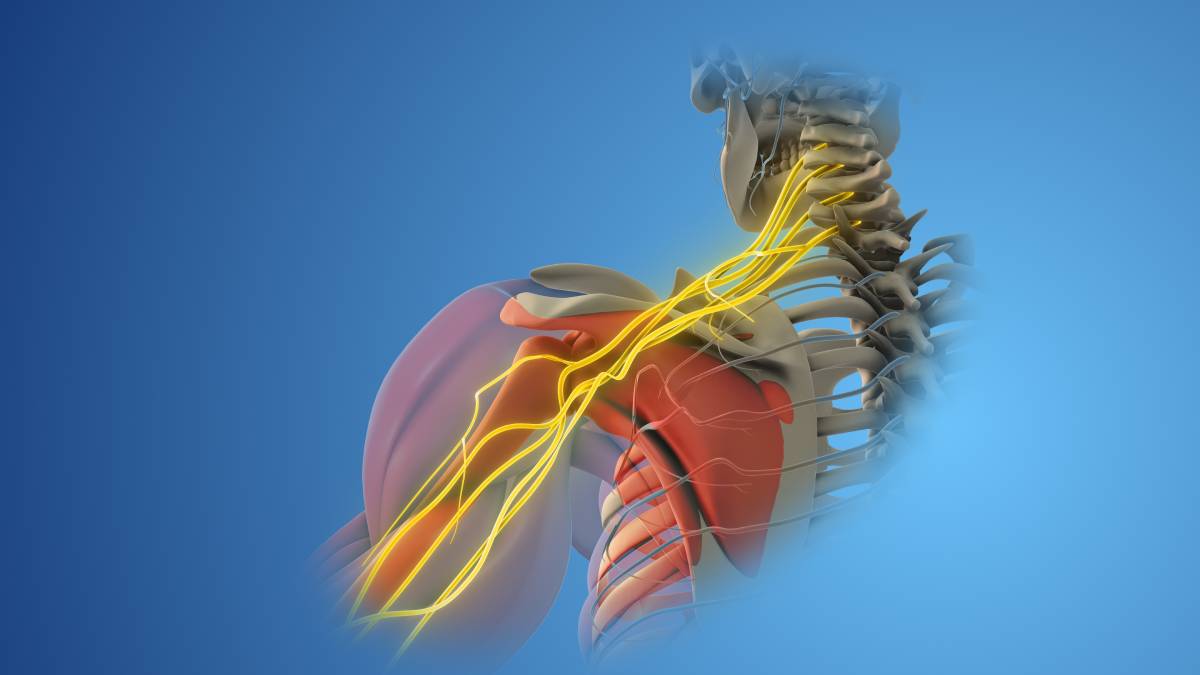Nerve blocks are an important tool in anesthesia care and pain management, offering effective relief for many procedures and conditions. By disrupting the transmission of pain signals along specific nerves, nerve blocks can provide targeted relief and improve the quality of life for individuals suffering from arm pain. Although they can target various areas of the body, this article will discuss the types and uses of nerve blocks for the arm.
During nerve blocks, anesthetic or anti-inflammatory medication is administered around nerves to temporarily block pain signals. These procedures target the specific nerves responsible for transmitting pain sensations, providing localized relief without affecting the entire body 1.
The brachial plexus nerve block targets the brachial plexus, a network of nerves that control movement and sensation in the shoulder, arm, and hand. Brachial plexus blocks are commonly used for surgical anesthesia and for managing chronic pain conditions such as complex regional pain syndrome (CRPS) and post-herpetic neuralgia 1.
More peripheral nerve blocks can target specific nerves in the arm, such as the median, ulnar, and radial nerves. They are frequently employed to alleviate pain associated with conditions like carpal tunnel syndrome, cubital tunnel syndrome, and radial tunnel syndrome, and to alleviate pain during and after surgery in regions innervated by these nerves 2.
The interscalene block targets the nerves in the neck that supply sensation to the shoulder and upper arm. Interscalene blocks are often utilized for shoulder surgeries and for managing pain related to conditions such as frozen shoulder and rotator cuff injuries 3.
The procedure for administering nerve blocks for the arm typically involves several key steps. First, the patient is positioned comfortably, and vital sign monitoring begins. Next, local anesthesia is administered to numb the injection site, ensuring minimal discomfort during the procedure. Under fluoroscopic or ultrasound guidance, a fine needle is precisely positioned near the targeted nerves and anesthetic medication is injected around the nerves to block pain signals effectively. The numbing effect takes between 20 and 40 minutes to work and lasts up to 24 hours. Following the injection, the patient is monitored for any immediate adverse reactions, and post-procedure instructions are provided 4,5.
Nerve blocks offer several advantages for arm pain management. By targeting specific nerves, nerve blocks provide localized pain relief without affecting the entire body. In addition, nerve blocks can minimize the need for oral pain medications, reducing the risk of systemic side effects. Finally, alleviating pain with nerve blocks can enhance arm function and mobility, facilitating rehabilitation efforts 4.
While nerve blocks are generally safe, they carry some risks. Rarely, nerve blocks may cause temporary or permanent nerve damage. There is also a small risk of infection at the injection site. In rare cases, individuals may experience nerve root injuries or paresthesias 3.
Nerve blocks are valuable tools in arm pain management, offering targeted relief for a variety of conditions. By understanding the types, procedure, benefits, and potential risks associated with nerve blocks, patients and healthcare providers can make informed decisions about pain management strategies, ultimately improving the quality of life of patients.
References
1. Nerve blocks for surgery on the arm or hand | CUH. Available at: https://www.cuh.nhs.uk/patient-information/nerve-blocks-for-surgery-on-the-arm-or-hand/. (Accessed: 9th April 2024)
2. Australia, H. Peripheral nerve block (upper limb). (2023).
3. John, R. S., Mckean, G. & Sarkar, R. A. Upper Limb Block Anesthesia. StatPearls (2023).
4. Nerve blocks for hand surgery — Chelsea and Westminster Hospital NHS Foundation Trust. Available at: https://www.chelwest.nhs.uk/your-visit/patient-leaflets/surgery-services/nerve-blocks-for-hand-surgery. (Accessed: 9th April 2024)
5. Nerve blocks for shoulder, arm or hand surgery | NHS Fife. Available at: https://www.nhsfife.org/services/patients-carers-and-visitors/preparing-for-surgery/general-information-about-your-anaesthetic/nerve-blocks-for-shoulder-arm-or-hand-surgery/. (Accessed: 9th April 2024)
